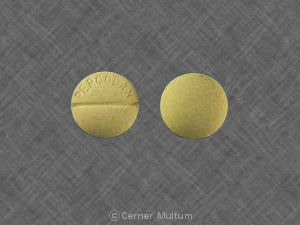Percodan Interactions
There are 879 drugs known to interact with Percodan (aspirin/oxycodone), along with 25 disease interactions, and 1 alcohol/food interaction. Of the total drug interactions, 275 are major, 582 are moderate, and 22 are minor.
- View all 879 medications that may interact with Percodan
- View Percodan alcohol/food interactions (1)
- View Percodan disease interactions (25)
Most frequently checked interactions
View interaction reports for Percodan (aspirin / oxycodone) and the medicines listed below.
- Adderall (amphetamine / dextroamphetamine)
- alprazolam
- Ambien (zolpidem)
- amitriptyline
- Ativan (lorazepam)
- clonazepam
- clonidine
- cyclobenzaprine
- Cymbalta (duloxetine)
- Demerol (meperidine)
- Dilaudid (hydromorphone)
- furosemide
- gabapentin
- ibuprofen
- Lexapro (escitalopram)
- Lipitor (atorvastatin)
- lisinopril
- morphine
- Norco (acetaminophen / hydrocodone)
- oxycodone
- OxyContin (oxycodone)
- Percocet (acetaminophen / oxycodone)
- Phenergan (promethazine)
- Seroquel (quetiapine)
- simvastatin
- tramadol
- trazodone
- Valium (diazepam)
- Vicodin (acetaminophen / hydrocodone)
- Xanax (alprazolam)
Percodan alcohol/food interactions
There is 1 alcohol/food interaction with Percodan (aspirin / oxycodone).
Percodan disease interactions
There are 25 disease interactions with Percodan (aspirin / oxycodone) which include:
- coagulation
- impaired GI motility
- infectious diarrhea
- prematurity
- asthma
- acute alcohol intoxication
- drug dependence
- hypotension
- intracranial pressure
- respiratory depression
- gastrointestinal obstruction
- GI toxicity
- renal dysfunction
- Reye's syndrome
- adrenal insufficiency
- liver disease
- renal dysfunction
- seizure disorders
- urinary retention
- arrhythmias
- biliary tract disease
- anemia
- dialysis
- G-6-PD deficiency
- hepatotoxicity
More about Percodan (aspirin / oxycodone)
- Percodan consumer information
- Compare alternatives
- Reviews (5)
- Drug images
- Side effects
- Dosage information
- During pregnancy
- Generic availability
- Drug class: narcotic analgesic combinations
Related treatment guides
Drug Interaction Classification
| Highly clinically significant. Avoid combinations; the risk of the interaction outweighs the benefit. | |
| Moderately clinically significant. Usually avoid combinations; use it only under special circumstances. | |
| Minimally clinically significant. Minimize risk; assess risk and consider an alternative drug, take steps to circumvent the interaction risk and/or institute a monitoring plan. | |
| No interaction information available. |
See also:
Further information
Always consult your healthcare provider to ensure the information displayed on this page applies to your personal circumstances.


